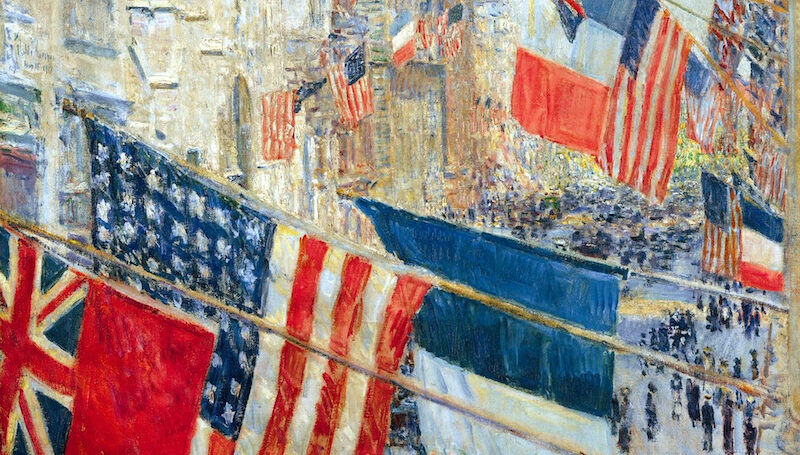Published on City Journal
“High Holidays” refers to the ten-day period of repentance spanning the Jewish New Year and the Day of Atonement, when—according to the Torah—the names of the righteous are inscribed in the Book of Life, and the names of the wicked are inscribed in the Book of Death. Not so long ago, the prevailing term was “High Holy Days.” It’s fitting that the secularist imperative has transformed “holy day” into “holiday”—leaving “high” as a good description of the many ego-tripping liberal rabbis who will uplift their congregants with the annual assurance that checking “D” at the ballot box is not just morally compulsory but also mandated by Scripture.
The Jewish-American community has leaned left at least since the Second Great Wave of immigration. Democratic presidential candidates have received on average 70 percent of the Jewish vote since 1972. The 1920 election might have been the last contest for the White House in which the Republican candidate bested the Democrat among Jewish voters—and that was only because the Socialist candidate, Eugene V. Debs, siphoned support from the Democrat, Ohio Governor James M. Cox.
Jewish-American civic organizations have long advocated for universalist causes like social justice and “inclusivity,” and they have concurrently and gradually shed their religious Jewish identity. Every year, nominally Jewish nonprofit institutions—from advocacy groups like the ADL and HIAS to community centers and houses of worship—become less and less Jewish, at least in so far as they are concerned with directly and principally helping Jews or bolstering the Jewish faith. The ADL and HIAS have changed their names, respectively, from the “Anti-Defamation League” and the “Hebrew Immigrant Aid Society,” presumably with the aim of casting off their parochial origins. These institutions have morphed into alternative forums for the mobilization of resources for liberal and progressive goals.
American Jews have also been among the strongest supporters of strict separation of church and state. Persecutors of Jews in the Old World were typically associated with the Church, before and even after the Enlightenment. Jews, being a tiny minority in a predominantly Christian country—comprising only about 2 percent of America’s population—have understandably worried about any weakening of the separation between church and state.
Yet Jewish-American enthusiasm for strict separation between religion and politics frequently stops at the synagogue’s edge. Last fall, in West Bloomfield, Michigan—home to one of the largest Jewish populations in America—the Jewish Community Center hosted a pre-election event to discuss “what’s at stake for our community and our country.” The organizers apparently concluded that only two people were needed to deliver a full discussion of the subject: a retired news reporter and a career governmental-affairs specialist with a lengthy record of political donations to the Democratic Party. Moreover, the Detroit Jewish News, the weekly newspaper that has been around since 1942 and monopolizes the community’s conversation, mostly excludes conservative voices from its pages. (A trusted Republican is occasionally allowed to vent—within limits.)
At the packed High Holy Day services at the Holocaust Memorial Center in Farmington Hills, Michigan, around the same time, a rabbi lauded the prospect of electing America’s first female president. Another rabbi mused on whether Ivanka Trump and Jared Kushner—observant Jews, he mockingly observed—were repenting for the sins of their relative, then presidential-nominee Donald J. Trump. Rabbis often use their High Holy Day sermons to push the progressive cause du jour: hybrid vehicles, gun control, gay marriage, Syrian immigration. Their political diatribes are usually met with applause.
Many Reform and Conservative Jews insist that rabbis must be “relevant” (i.e., political) because, as community leaders, they have a moral obligation to “execute justice for the fatherless and widow, and loveth the stranger,” as the Bible commands—and fight the “hate” emanating from the White House. Liberal Jews have embraced the mystical idea of tikkun olam (“repairing the world,”) as an injunction to pursue social change. Conveniently, this modern interpretation of Judaism overlaps almost perfectly with the agenda of the Democratic Party.
Prominent Jews were noticeably mute about President Trump’s executive order“promoting free speech and religious liberty,” signed in May and backed primarily by Christian conservatives. Maybe that’s because they’re pleased by the knowledge that their synagogues will have more opportunity to rail against Trump and Republicans from the bimah without fear of losing tax-exempt status. Once the Democrats are back in power, in four years’ time—or less, if God answers their prayers—they’ll resume their advocacy of strict separation between church and state.
I’m under no illusion that the Jewish-American community will lose its liberal proclivities or demand that the rabbinate become apolitical. I’m simply asking for a few days of respite from divisiveness while in a sacred space with family members who have traveled long distances to be together. So, rabbis, this year, please don’t pander to your congregants, spoon-feeding them bromides straight from cable news. Use your words to raise us up, together, and enlighten us with wisdom that transcends the contemporary scene.
